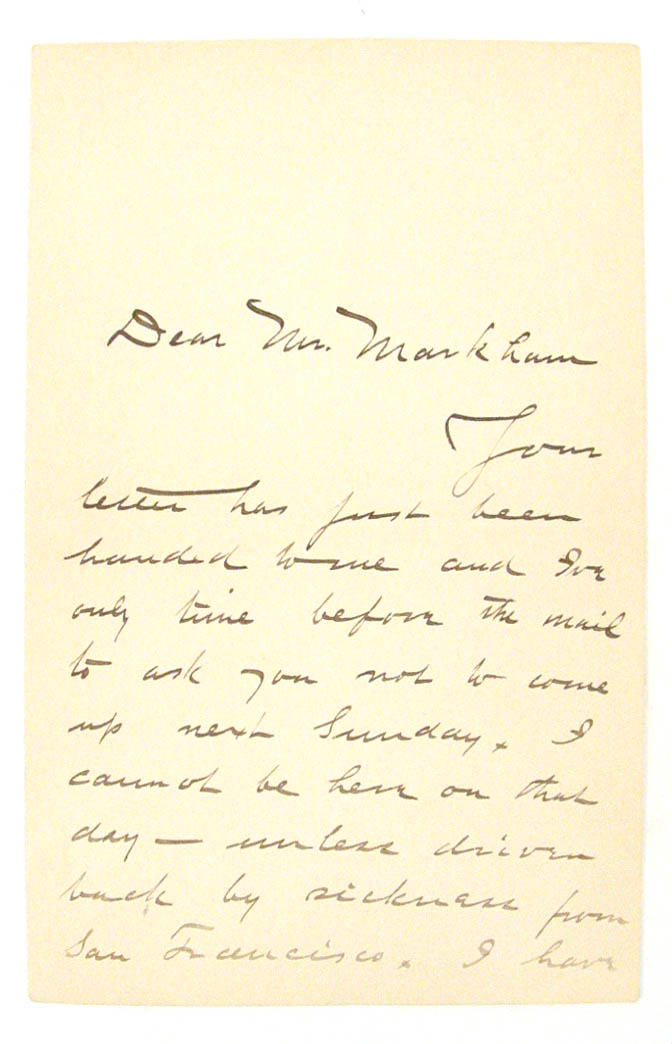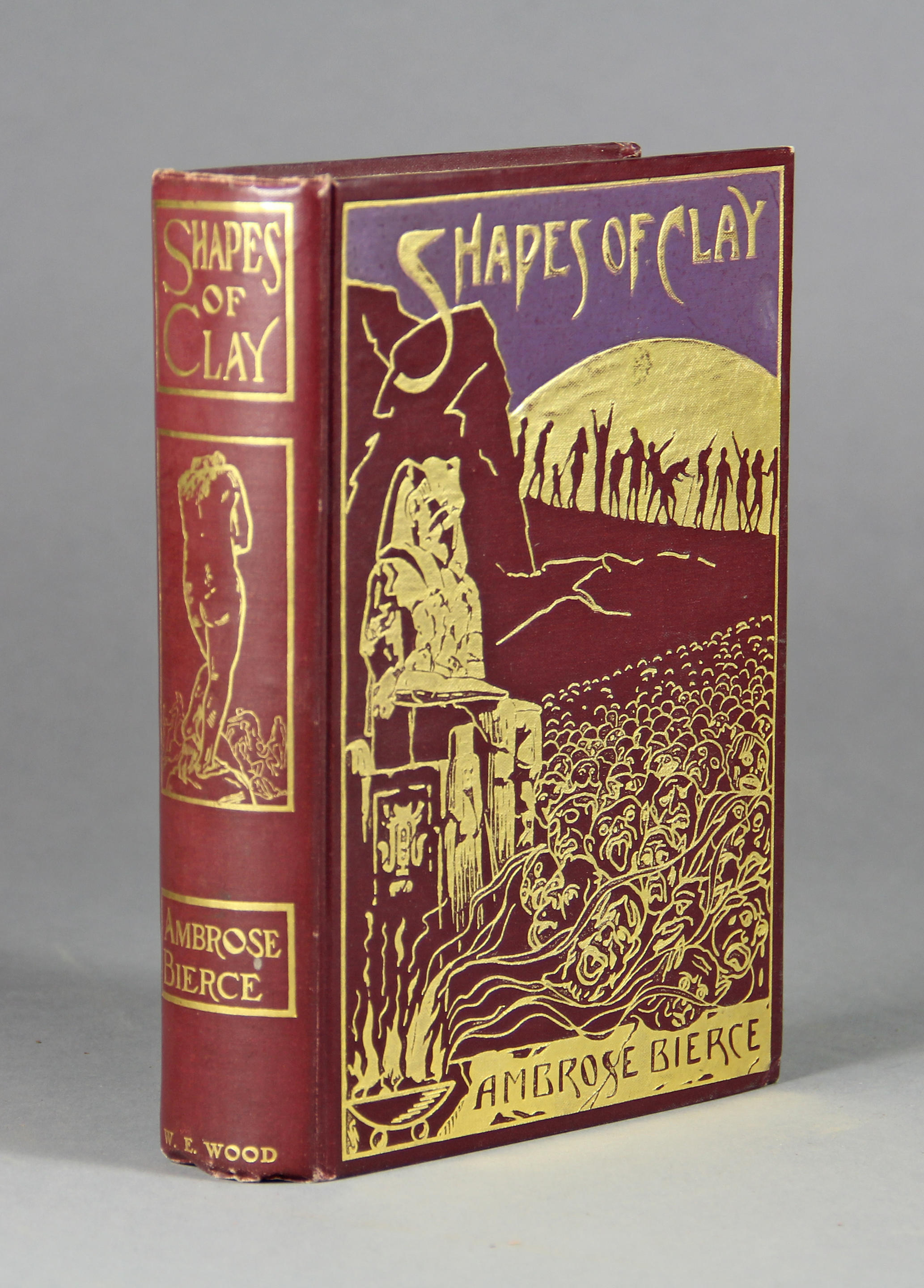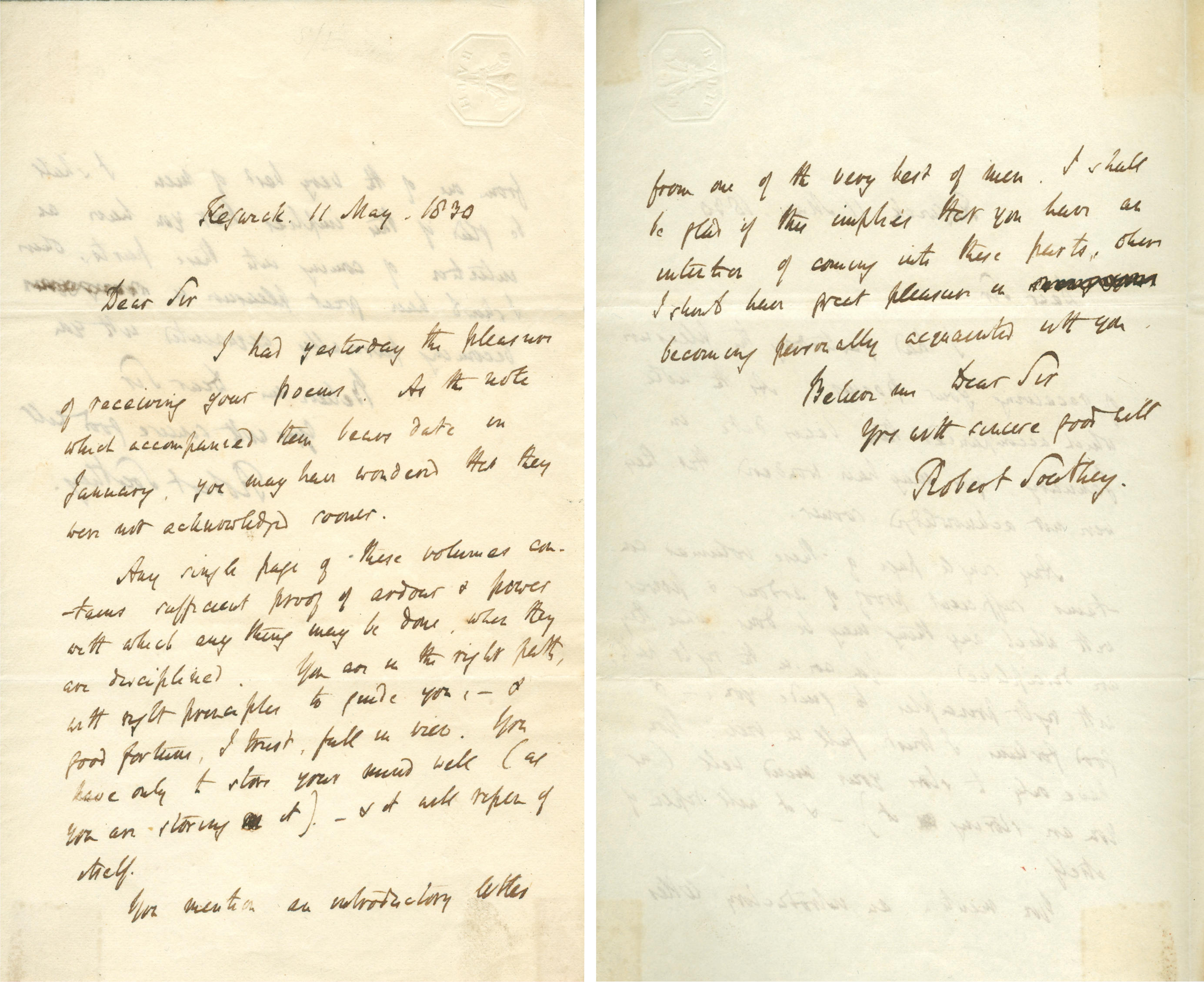BIERCE, Ambrose (1842-1913). Autograph letter signed ("Ambrose Bierce") to Gen. James Grant Wilson (1833-1914), Los Gatos, California, 15 March 1898. 3 pages, 8vo, signature page laid down .
BIERCE, Ambrose (1842-1913). Autograph letter signed ("Ambrose Bierce") to Gen. James Grant Wilson (1833-1914), Los Gatos, California, 15 March 1898. 3 pages, 8vo, signature page laid down . DRAWING HIS BOOKS FROM THEIR "DREAD ABODE" The great Civil War-era satirist recounts his major publications for Wilson, a co-editor at Appleton's Cyclopedia of American Biography: "In partial compliance with you request I beg leave to submit the following list of such of my books as I can draw from their dread abode: 'In the Midst of Life' -- Chatto & Windus, London; Tauchnitz, Leipzig, 1891 (Published by E. L. G. Steele San Francisco at same time as 'Tales of Soldiers and Civilians,' and recently reissued by Putnams, N.Y., with the London title.)..." He goes on to list Can Such Things Be? , Black Beetles in Amber , and The Monk and the Hangman's Daughter . - BIERCE. Autograph letter signed ("Ambrose Bierce"), to Miss Brewer, Army & Navy Club, Washington, D.C., 5 December 1910. 3 pages, 8vo . A WHIMSICAL LETTER TO A YOUNG FRIEND: "If my door-bell rings & your name is announced and I fail to recall it, you'd better come in and kiss me. The kiss I should identify among a thousand--if I had so many in memory..." One of America's greatest satirists and humorists, there was always a dark undertone to his work and his life, a product of the horrible scenes he witnessed in Civil War combat at Shiloh, Chickamauga, Missionary Ridge, Kenesaw Mountain and other killing fields of the Civil War. He turned some of these memories into masterpieces like "An Occurrence at Owl Creek Bridge." He built a successful postwar career as a columnist for Hearst's San Francisco Chronicle but tragedy and disappointment dogged his personal life: his marriage ended in divorce and two of his three children predeceased him. He seems to have carried out a kind of suicide by warfare, putting his affairs in order and setting out to cover the Mexican revolution at the end of 1913. He reached Mexico and traveled with Pancho Villas' forces and was never heard from again. Presumably killed in the conflict, his body was never recovered. Together 2 items . (2)
BIERCE, Ambrose (1842-1913). Autograph letter signed ("Ambrose Bierce") to Gen. James Grant Wilson (1833-1914), Los Gatos, California, 15 March 1898. 3 pages, 8vo, signature page laid down .
BIERCE, Ambrose (1842-1913). Autograph letter signed ("Ambrose Bierce") to Gen. James Grant Wilson (1833-1914), Los Gatos, California, 15 March 1898. 3 pages, 8vo, signature page laid down . DRAWING HIS BOOKS FROM THEIR "DREAD ABODE" The great Civil War-era satirist recounts his major publications for Wilson, a co-editor at Appleton's Cyclopedia of American Biography: "In partial compliance with you request I beg leave to submit the following list of such of my books as I can draw from their dread abode: 'In the Midst of Life' -- Chatto & Windus, London; Tauchnitz, Leipzig, 1891 (Published by E. L. G. Steele San Francisco at same time as 'Tales of Soldiers and Civilians,' and recently reissued by Putnams, N.Y., with the London title.)..." He goes on to list Can Such Things Be? , Black Beetles in Amber , and The Monk and the Hangman's Daughter . - BIERCE. Autograph letter signed ("Ambrose Bierce"), to Miss Brewer, Army & Navy Club, Washington, D.C., 5 December 1910. 3 pages, 8vo . A WHIMSICAL LETTER TO A YOUNG FRIEND: "If my door-bell rings & your name is announced and I fail to recall it, you'd better come in and kiss me. The kiss I should identify among a thousand--if I had so many in memory..." One of America's greatest satirists and humorists, there was always a dark undertone to his work and his life, a product of the horrible scenes he witnessed in Civil War combat at Shiloh, Chickamauga, Missionary Ridge, Kenesaw Mountain and other killing fields of the Civil War. He turned some of these memories into masterpieces like "An Occurrence at Owl Creek Bridge." He built a successful postwar career as a columnist for Hearst's San Francisco Chronicle but tragedy and disappointment dogged his personal life: his marriage ended in divorce and two of his three children predeceased him. He seems to have carried out a kind of suicide by warfare, putting his affairs in order and setting out to cover the Mexican revolution at the end of 1913. He reached Mexico and traveled with Pancho Villas' forces and was never heard from again. Presumably killed in the conflict, his body was never recovered. Together 2 items . (2)















Testen Sie LotSearch und seine Premium-Features 7 Tage - ohne Kosten!
Lassen Sie sich automatisch über neue Objekte in kommenden Auktionen benachrichtigen.
Suchauftrag anlegen